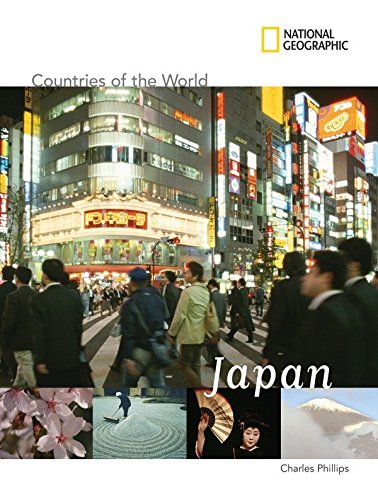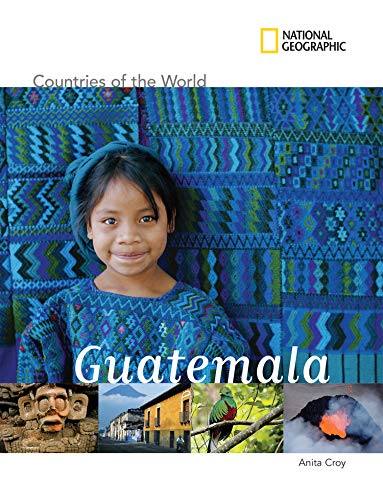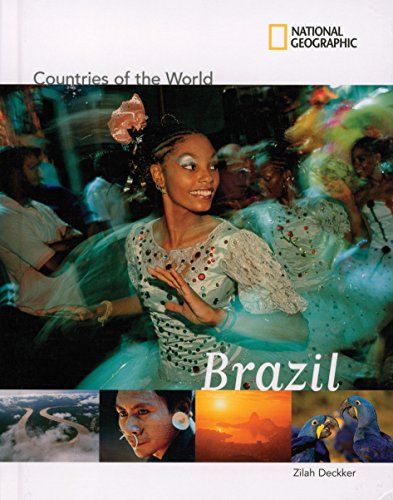-
National Geographic Atlas of the World
National Geographic, Alex Tait
Hardcover (National Geographic, Oct. 1, 2019)Created for all global citizens, this universally respected volume of world maps has been completely revised and updated with fascinating visualizations of international trends and global conditions.National Geographic's flagship Atlas of the World, now in its 11th edition, provides authoritative maps of every country, ocean, and region of the world, as well as thematic maps and accompanying graphics showing important population, environmental, and economic patterns. Organized by continent and reflecting today's political boundaries and identities, this authoritative atlas is an indispensable reference for schools and libraries, as well as the latest resource for home browsing and study. A thematically organized opening section uses current data to visualize urgent concerns, such as Earth's last wild places, changing freshwater availability, human migration and refugee movement, and human rights conditions globally. The back of the book contains basic facts and flags of every country, as well as a comprehensive index cross-referencing more than 150,000 place names. A thought-provoking foreword by Alexander M. Tait, The Geographer of National Geographic, begins the book.
-
National Geographic Countries of the World: Japan
Charles Phillips
Paperback (National Geographic Children's Books, Aug. 11, 2009)National Geographic requests the pleasure of your company on a journey to the faraway island nation of "Nippon." Japan's name means "origin of the sun" (often translated as “Land of the Rising Sun”)—a term born of the country’s location to the east of the ancient empires of China. Take a trip through history to discover the influence that the Chinese exerted on their neighbors throughout antiquity. Enjoy the scenic island landscape, richly celebrated in Japanese art and literature. Scale the heights and get to know the hilly topography—mountains cover over 75 percent of Japan. Visit the national parks that now preserve the country's treasured natural heritage. Meet Japan's industrious people, mainly plains and lowland dwellers. Visit the teeming cities on the river deltas and coastlines, which are among the most populous places on the planet. Follow the remarkable rise of nation’s modern economy, based mainly on the manufacture of high-quality, high-tech consumer goods. Learn how exports to the world's largest markets—including the United States—have made Japan a global economic power, and how the country's average income levels and standards of living are now among the highest in the world. Experience this ethnically homogenous culture, with its unique language and alphabet, and observe the rites and rituals of its two main faiths—Buddhism and Shinto, a religion that originated in Japan. Y
Y
-
National Geographic Atlas of the World
National Geographic
Hardcover (National Geographic, Sept. 30, 2014)Marking the 100th anniversary of National Geographic cartography, this prestigious reference is the essential guide to understanding today's interconnected world. Illustrated maps and informational graphics chart rapidly changing global themes such as population trends, urbanization, health and longevity, human migration, climate change, communications, and the world economy. The core of any atlas is the reference mapping section and the 10th Edition boasts the largest and most comprehensive collection of political maps ever published by National Geographic. Completely updated and expanded by sixteen pages, this section features new maps of Ireland, Scotland, England and Wales, three detailed regional maps of Australia, expanded coverage of Africa, and a map of the strategically important area around the Mediterranean Sea, encompassing North Africa and Southern Europe. In addition, special sections are dedicated to the Oceans, Space, and Flags and Facts. These are followed by an expanded index, with more than 150,000 place names. The 10th Edition's high-quality construction and large format make it a centerpiece to gather around as well as the perfect reference tool for understanding how the present and past continually collide in today's fast-paced world. V
V
-
National Geographic Countries of the World: China
Jen Green
Paperback (National Geographic Children's Books, Aug. 11, 2009)National Geographic invites you to journey through China in a vibrant book that profiles the country's extensive geography, its storied history, and its rich culture. You'll also examine the growing role modern China plays in today's global economy. Travel with the experts deep into this land of diverse people and see the wide range of landscapes, from vast plateaus to the great timber forests. Witness the Yangtze River in the east, yaks and gazelle in the wilderness of the west, and rare pandas as they prowl their natural habitat. Wander through the past, along the Great Wall of China, built to ward off enemies of a mighty empire. Experience the effects of Mao's Cultural Revolution, and learn how political tensions with neighbors like Taiwan and Hong Kong play against China's policy of welcoming tourists. Finally, examine how modern industrial China is balancing the traditions of the past with the demands of the future. W
W
-
National Geographic Countries of the World: Afghanistan
Susan Whitfield
Library Binding (National Geographic Children's Books, Aug. 12, 2008)Visit a landlocked land of rugged mountains and rich natural resources. Meet the many peoples within Afghanistan’s tribal societal structure. Learn of Afghanistan’s long history of invasion, resistance, and civil war. Discover why Persian and Pashto prevail in this multilingual land. Find out why this troubled land has been called the "Chessboard of History."National Geographic supports K-12 educators with ELA Common Core Resources.Visit www.natgeoed.org/commoncore for more information. W
W
-
National Geographic Countries of the World: Kenya
Bridget Giles
Paperback (National Geographic Children's Books, Aug. 11, 2009)Welcome to Kenya, land of light and infinite variety. National Geographic will be your guide in Nairobi—and into the bush beyond. Kenya's busy capital bustles with crowds, traffic, and markets selling produce from the heartlands. Out in the bush, myriad tribal peoples, including the Maasai, live more traditional lives. Your African odyssey will take you to the soaring Mount Kilimanjaro. A climb to its snow-capped peak will lead you through five different ecosystems. Such diversity is common to Kenya's landscapes and is also reflected in the country's stunning array of wildlife. Lions, zebras, and wildebeest roam the land, while the great rivers teem with hippopotami and crocodiles. The human history of Kenya is no less diverse. From the first footprints of humans to the colonial rule of the British and the Germans, major change was a constant in the progress toward independence in the 1950s and prosperity in the 1960s. The book concludes with a look at the challenges facing modern-day Kenya. W
W
-
National Geographic Countries of the World: Guatemala
Anita Croy
Library Binding (National Geographic Children's Books, Aug. 11, 2009)"Learn about Guatemala’s brutal history of dictatorship and guerilla warfare. Discover the proud Mayan heritage of this beautiful land. Dare to peer into some of the highest and most active volcanoes in Latin America. Explore a land of impenetrable jungles, colorful coral reefs, and spectacular flora and fauna."National Geographic supports K-12 educators with ELA Common Core Resources.Visit www.natgeoed.org/commoncore for more information. Y
Y
-
National Geographic Countries of the World: Brazil
Zilah Deckker
Library Binding (National Geographic Children's Books, Sept. 9, 2008)Come south to sunny Brazil, the land of the great Amazon River. Learn of the threats to Brazil’s rain forests, and the consequences for the rest of the world. Visit Brasilia, the futuristic capital city, designed to represent all of Brazil’s peoples. Meet the amazing diversity of race, culture, and religion that being Brazilian encompasses. Samba ‘til sunup and feel all the frenzied passion of Carnival in Rio de Janeiro. Experience the national obsession with the Joga Bonito—the "beautiful game"—which has made Brazil five-time world soccer champions.National Geographic supports K-12 educators with ELA Common Core Resources.Visit www.natgeoed.org/commoncore for more information. Z
Z
-
National Geographic Countries of the World: Peru
Anita Croy
Paperback (National Geographic Children's Books, Aug. 11, 2009)Introduces the geography, wildlife, climate, history, people, culture, government, and economy of Peru. Z
Z
-
National Geographic Countries of the World: Japan
Charles Phillips
Library Binding (National Geographic Children's Books, April 10, 2007)National Geographic requests the pleasure of your company on a journey to the faraway island nation of "Nippon." Japan's name means "origin of the sun" (often translated as Land of the Rising Sun)—a term born of Japan's location to the east of the ancient empires of China. Take a trip through history to discover the influence that the Chinese exerted on their island neighbors throughout antiquity. Enjoy the scenic island landscape, richly celebrated in Japanese art and literature. Scale the heights and get to know the hilly topography—mountains cover over 75 percent of Japan's landscape. Visit the National Parks that now preserve the country's treasured natural heritage. Meet Japan's industrious people, mainly plains and lowland dwellers. Visit the teeming cities on the river deltas and coastlines, which are among the most populous places on the planet. Follow the remarkable rise of Japan's modern economy, based mainly on the manufacture of high-quality, high-tech consumer goods. Learn how exports to the world's largest markets—including the United States—have made Japan a global economic power; and how the country's average income levels and standards of living are now among the highest in the world. Experience this ethnically homogenous culture, with its unique language and alphabet, and observe the rites and rituals of its two main faiths—Buddhism and Shinto, a religion which originated in Japan.National Geographic supports K-12 educators with ELA Common Core Resources.Visit www.natgeoed.org/commoncore for more information. Y
Y
-
National Geographic Countries of the World: Turkey
Sarah Shields
Library Binding (National Geographic Children's Books, Jan. 13, 2009)Travel to Turkey, where Asia and Europe meet at the bridge over the Bosphorus. Learn how Turkey’s diversity of cultures make it one of the world’s melting pots. Discover how Atatürk became the father of modern Turkey. Meet the many Muslims who live within this secular, Western-oriented republic.National Geographic supports K-12 educators with ELA Common Core Resources.Visit www.natgeoed.org/commoncore for more information. W
W
-
National Geographic Countries of the World: India
A. Kamala Dalal
Library Binding (National Geographic Children's Books, Sept. 11, 2007)Discover India's rich tapestry of cultures and religions. See why India is now a world leader in technology. Visit the Ganges—spiritual artery of the nation. Learn about the animals that are sacred in India. Visit the Taj Mahal and discover its romantic origins.National Geographic supports K-12 educators with ELA Common Core Resources.Visit www.natgeoed.org/commoncore for more information. W
W